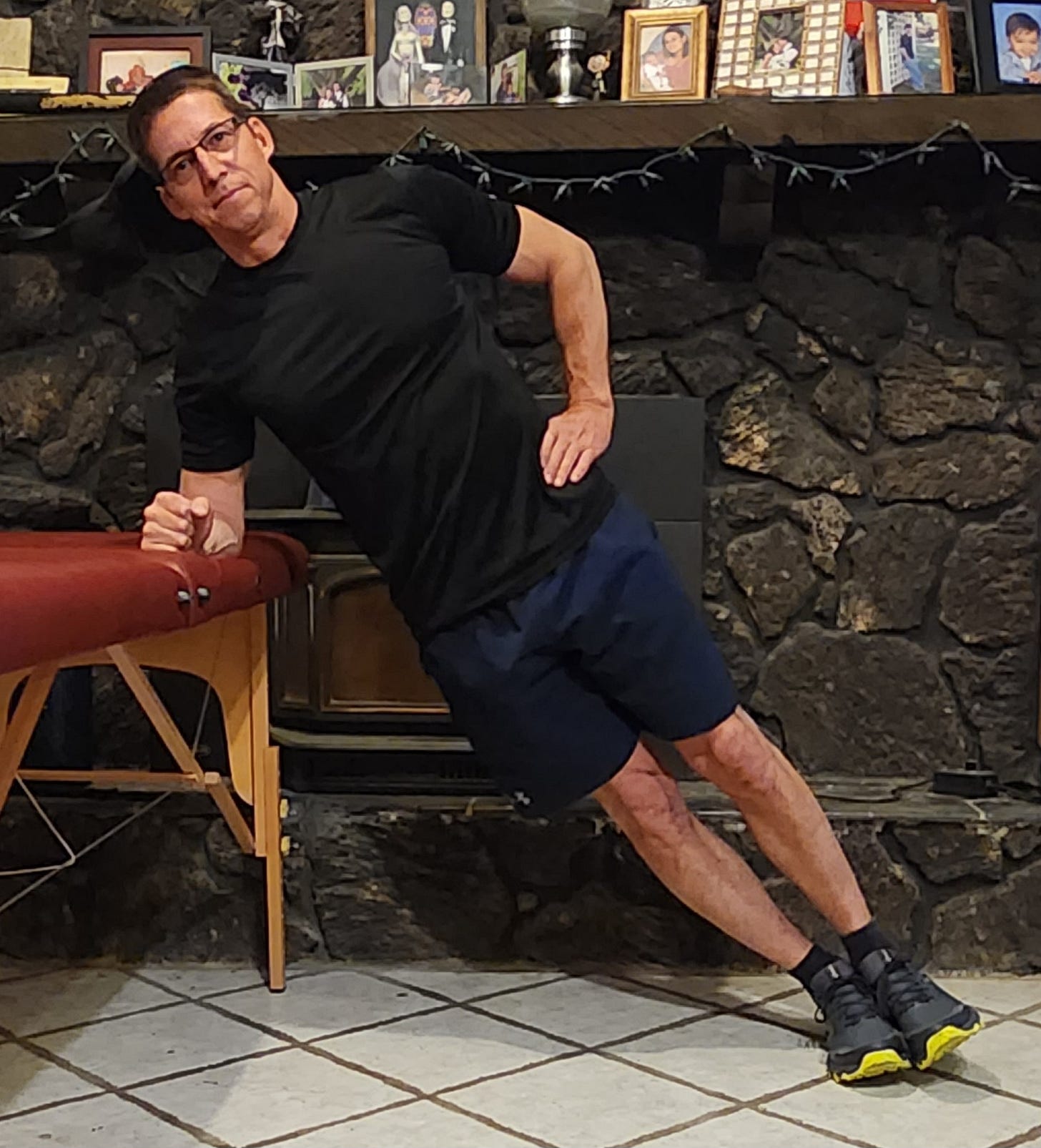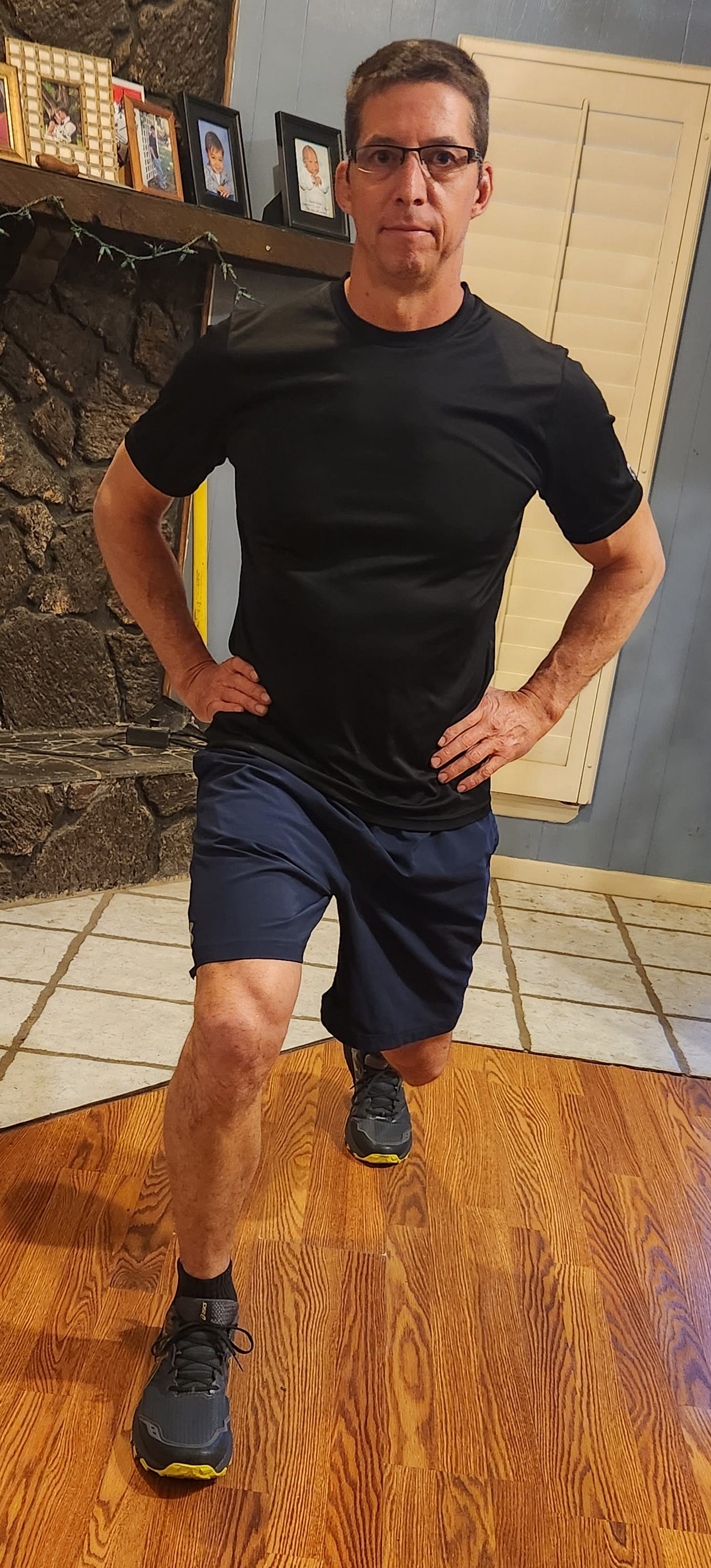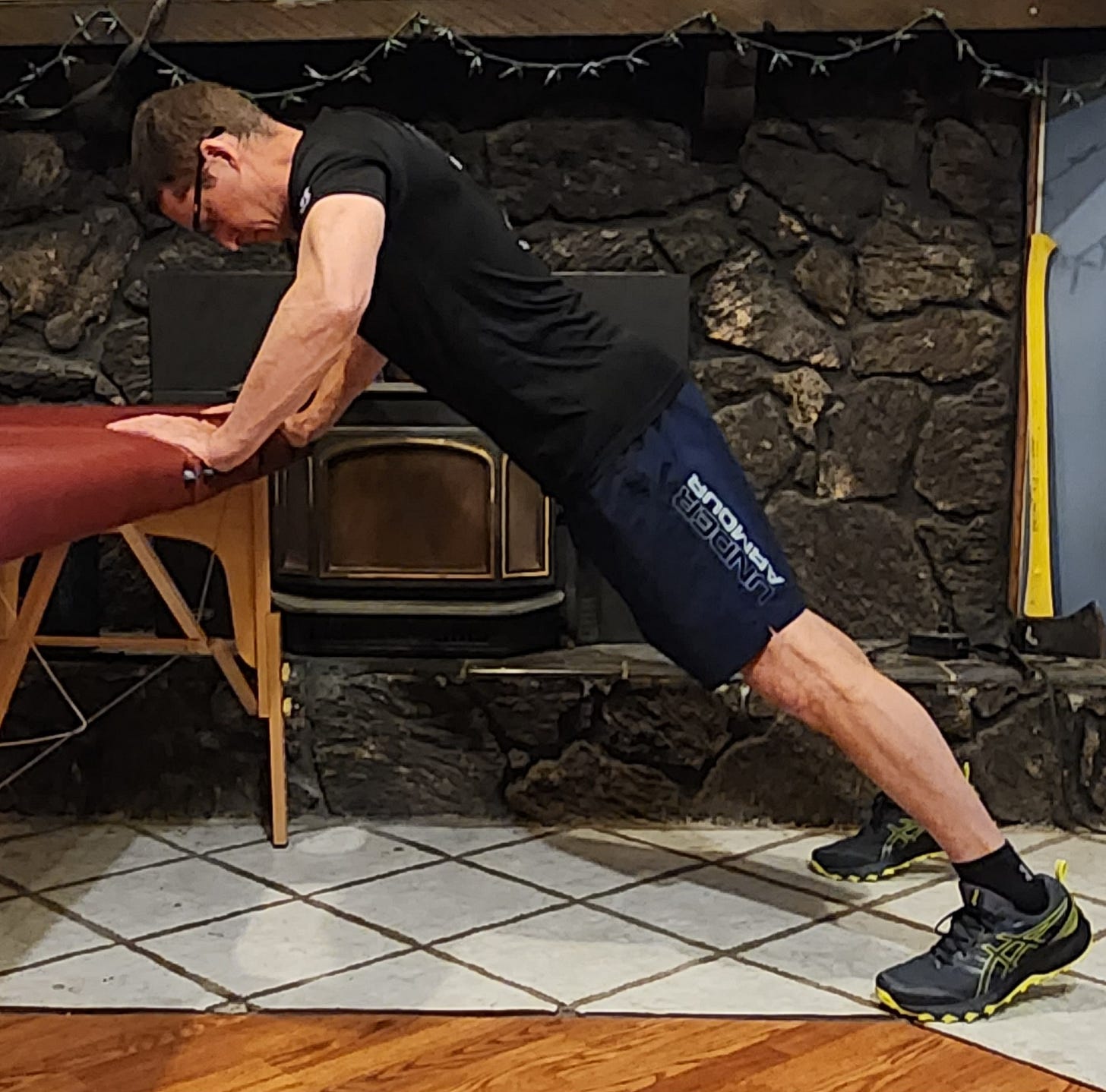Best exercises to avoid seeing "Us"
This is not medical advice.
Here are is a list of exercise deficiencies that I've noticed across thousands of patients.
“Us” means therapists, or other medical personel. Sometimes, we lecture you too much about your health choices, and we’re obnoxious, and maybe we’re hypocrites, and we charge a fortune, and blah, blah, blah... Maybe you can avoid all that on your own.
Of course my biggest fear is I miss a suggested exercise, so please comment on your favorite. The best thing about these 13 exercises, is that only 3 possibly need equipment. Most you can do anywhere without extra equipment.
13 sounds like a lot, but consider at least reviewing them. I picked the ones that I think will prevent you from seeing someone like me. Or prevent you from being laid up in a hospital or nursing home. I see it happen all the time.
If you can easily do some of these, maybe you don’t need it. Perform the ones that are challenging.
Do not perform any of these with pain. Stop immediately, and seek in person, professional advice.
I’ve split them into 3 sections, legs, trunk, and arms. Many of these will also help with osteoporosis. Supplements are prescribed for osteoporosis, but are you providing the stimulus for bone growth? That involves stress (exercise and weight bearing) to the bones.
The Legs
Bridges - I listed this first because I’ve seen many people in hospitals and nursing homes. Once you lose the ability to lift your butt off the bed, life becomes more difficult and painful. You need this motion for the bed pan, and to move in bed. When people have to move or lift you out of bed, it is frequently more painful. This could have been listed in the trunk section also.
Resisted sideways walk - Our hip abductors (side hip muscles) are extremely important to prevent us from limping, or from falling over.
Step ups - People lose the ability to walk stairs fairly quickly.
Stairs require one leg to balance and hold all your body weight while raising and lowering yourself. The patellar tendon is holding all your weight, and if you are walking down, you are asking the muscles to lengthen and hold a force at the same time.
Lunges - holding or moving in this position improves lower extremity strength and balance.
Chair squats - same rationale. Prevents difficulty with standing from a chair.
Heel raises - Work the calf and foot muscles to prevent plantar fasciitis symptoms.
Balance on one foot.
“Dammit, he wants 13 of these, and we’re only 1/2 the way there!”
The Trunk - You can call these abdominals, or the core. I also like to think of it as a transmission. The trunk is more of a stabilizer than a prime mover, like the arms and legs. It helps transmit force from the legs to the arms, especially in sports. Many of these exercises can help prevent back pain, or may help relieve back pain.
Planks - “where are the sit ups?!” Planks are great at working the core in the manner in which it functionally works most of the day. These help keep the spine stable. There are many easier variations from your knees, or higher angles.
Bird dogs or hip extensions from the counter - These work the back extensors. They are important for back health.
Lie on your stomach - Once people lose the ability to do this, their posture is more likely to lean forward, and be very difficult to get back later.
The Arms
Standing rows or broom handle pull ups - Standing rows work the back posture, and rotator cuff muscles (picture in postural exercise link above).
Counter push ups - if you can’t do full push ups. This is a good muscle and bone stimulator for the upper body.
Overhead hanging shoulder stretch, or seated machine stretch.
Some kind of stationary bike or Total Gym
I see many retirees with knee and hip issues. One of these devices would be great for overall joint health.
How many times should you do all these things? The link below describes the basics.
One final note…
There, that wasn’t so bad, was it? I can feel the collective groans and eye rolls, of all the retirees who just don’t feel like doing it. All the retirees who give me attitude, like my teenage boy…
But wait! That was the whole point of the article. Avoid seeing us obnoxious lecturers :)
Others stationary bike
walk
USSR vs USA strength vs cardio mentality
frequency and variation










